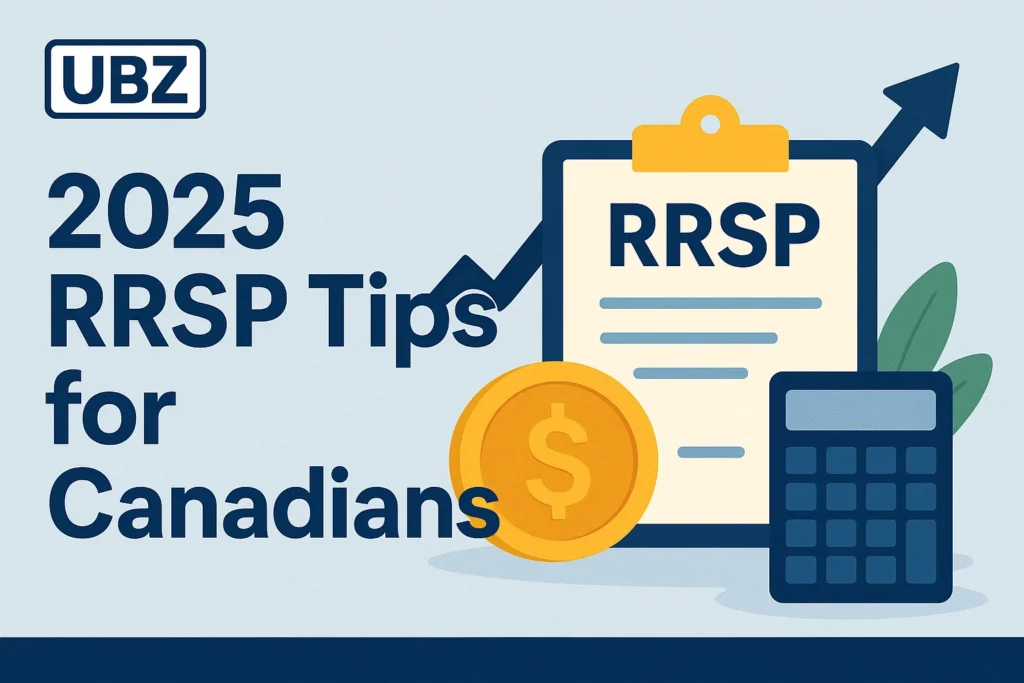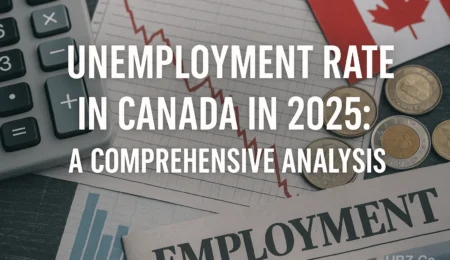Introduction to RRSPs
A Registered Retirement Savings Plan (RRSP) is a cornerstone of retirement planning for Canadians, offering significant tax advantages to help you save for your future. Unlike a regular savings account, where interest is taxed annually, an RRSP allows your investments to grow tax-free until you withdraw the funds, typically during retirement when your income and tax bracket may be lower. Registered with the Canada Revenue Agency (CRA), RRSPs are accessible to Canadian residents under 71 with earned income, making them a versatile tool for building long-term wealth.

Benefits of an RRSP
RRSPs provide several compelling benefits:
- Tax Deductions: Contributions to your RRSP are deductible from your taxable income. For example, if you contribute $5,000 and are in a 30% tax bracket, you could save $1,500 in taxes for that year.
- Tax-Free Growth: Investment earnings, such as dividends, interest, or capital gains, are not taxed while they remain in the RRSP, allowing your savings to compound more effectively over time.
- Flexibility for Life Events: The First-Time Home Buyer’s Plan (FHBP) allows you to withdraw up to $35,000 tax-free to buy or build a home, with repayment required over 15 years. The Lifelong Learning Plan (LLP) permits withdrawals of up to $20,000 for full-time education or training, repayable over 10 years.
- Employer Matching: Group RRSPs offered by employers often include matching contributions (typically 1-5% of your salary), providing an immediate boost to your savings.
These benefits make RRSPs not only a retirement tool but also a strategic option for other financial goals.
Eligibility and Contribution RRSP Limits
To open an RRSP, you must be a Canadian resident under 71 years of age with earned income, which includes wages, self-employment income, rental income, or certain disability payments. Even minors can open an RRSP with parental consent if they have earned income.
Your annual contribution limit is calculated as 18% of your earned income from the previous year, up to a maximum set by the CRA. For 2025, the maximum contribution limit is $32,490, up from $31,560 in 2024. If you have a registered pension plan (RPP) through your employer, your RRSP limit may be reduced by a pension adjustment (PA), reflecting your pension contributions.
Unused contribution room carries forward indefinitely, allowing you to make larger contributions in future years when you have more income. You can check your contribution room via your CRA My Account or Notice of Assessment.
| Year | Maximum Contribution Limit |
|---|---|
| 2024 | $31,560 |
| 2025 | $32,490 |
Warning: Over-contributing beyond your limit by more than $2,000 incurs a 1% monthly penalty on the excess amount, plus potential late-filing fees if not corrected within 90 days
Types of RRSPs
RRSPs come in several forms, each suited to different needs:
- Individual RRSP: Owned and managed by you, offering full control over investment choices.
- Spousal RRSP: Allows one spouse to contribute to the other’s RRSP, which can help split income in retirement, potentially reducing taxes.
- Group RRSP: Offered through employers, with contributions made via payroll deductions and often matched by the employer, reducing management fees compared to retail RRSPs.
Investment Options
RRSPs offer a wide range of investment options to suit different risk tolerances and goals:
- Mutual Funds: Professionally managed portfolios that provide diversification across assets.
- Stocks and Bonds: For investors seeking more control, allowing direct investment in equities or fixed-income securities.
- Guaranteed Investment Certificates (GICs): Low-risk options with fixed returns, ideal for conservative investors.
- Segregated Funds: Similar to mutual funds but with insurance features, offering potential creditor protection.
Choosing the right mix depends on your risk tolerance, time horizon, and retirement goals. Younger investors may favor growth-oriented options like stocks, while those nearing retirement might prefer safer investments like GICs.
Withdrawals and Tax Implications
You can withdraw funds from your RRSP at any time, but withdrawals are treated as taxable income in the year they are made, subject to income tax and withholding taxes. Exceptions include withdrawals under the FHBP or LLP, which are tax-free if eligibility criteria are met and repayments are made on schedule.
By December 31 of the year you turn 71, you must convert your RRSP into a Registered Retirement Income Fund (RRIF) or purchase an annuity. An RRIF requires mandatory annual withdrawals, which are taxable, ensuring a steady income stream in retirement.
| Program | Withdrawal Limit | Repayment Period |
|---|---|---|
| First-Time Home Buyer’s Plan | $35,000 | 15 years |
| Lifelong Learning Plan | $20,000 | 10 years |
Latest RRSP Updates for 2025
For the 2025 tax year, the RRSP contribution limit has increased to $32,490, reflecting inflation and income trends. This means individuals with earned income of $180,500 or more in 2024 can contribute the full amount for the 2024 tax year, with contributions due by March 3, 2025. Carrying forward unused contribution room remains a valuable strategy for those unable to max out contributions annually.
Tips for Maximizing RRSP Contributions
To make the most of your RRSP, consider these strategies:
- Start Early: The earlier you contribute, the more your investments benefit from compounding. For example, $5,000 contributed annually from age 25 to 35 could grow to over $500,000 by age 65, assuming a 7% annual return.
- Contribute Regularly: Set up automatic contributions to ensure consistent savings, even if the amounts are small.
- Leverage Employer Matching: Contribute enough to a group RRSP to receive the full employer match, as this is essentially free money.
- Optimize Tax Benefits: Contribute more in years when you’re in a higher tax bracket to maximize deductions, or carry forward contributions to future high-income years.
- Use Carry-Forward Room: Take advantage of unused contribution room from previous years to make larger contributions when financially feasible.
- Review Investments: Periodically reassess your portfolio to ensure it aligns with your risk tolerance and retirement timeline, shifting to conservative options as you near retirement.
Common Mistakes to Avoid
Avoid these pitfalls to protect your RRSP savings:
- Missing Deadlines: Contributions for the 2024 tax year must be made by March 3, 2025. Missing this deadline means losing the tax deduction for that year.
- Over-Contributing: Exceeding your contribution limit by more than $2,000 triggers a 1% monthly penalty. Track your limit via CRA My Account.
- Early Withdrawals: Withdrawing funds before retirement reduces future growth and incurs taxes, potentially pushing you into a higher tax bracket.
- Lack of Diversification: Investing in a single asset class increases risk. Spread investments across stocks, bonds, and GICs for balance.
- Ignoring Fees: High management fees can erode returns. Opt for low-cost options like index funds or ETFs when possible.
How to Open an RRSP Account
Opening an RRSP is simple and can be done through banks, credit unions, brokerage firms, or financial advisors. You’ll need to provide identification and basic financial information. Many institutions offer online platforms for managing contributions and investments, and setting up automatic contributions can streamline the process.
Conclusion
RRSPs are a vital tool for Canadians aiming to secure their financial future. With tax deductions, tax-free growth, and flexibility for home purchases or education, they offer both immediate and long-term benefits. By starting early, contributing regularly, and avoiding common mistakes, you can maximize your RRSP’s potential. With the 2025 contribution limit at $32,490, now is an ideal time to review your retirement strategy and take advantage of this powerful savings vehicle. Consult a financial advisor to tailor your RRSP plan to your unique goals and circumstances.




Leave a Reply